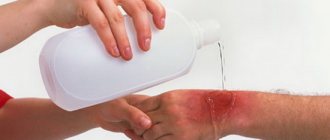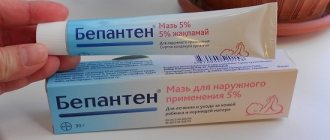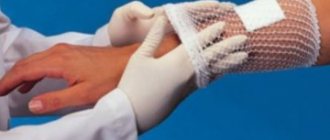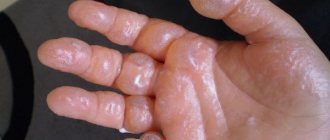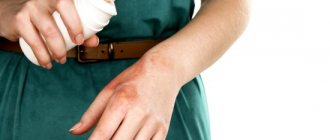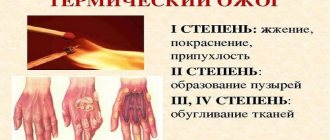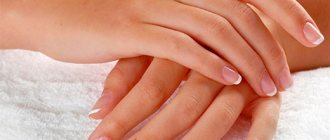Quite often, both household and thermal injuries occur due to non-compliance with basic rules for using household appliances. Most often, at home, an injury in the form of a burn damages the skin with a conventional ironing device. After all, clothes are ironed almost every day, and inattention and haste cause injuries.
Degree of damage
Since the household appliance in question is heated to high temperatures, it can cause burns of any degree. Let's consider all possible variations:
- The first is that the skin turns red, and sometimes peeling occurs. The pain is minor and no specialized treatment is required.
- The second is the appearance of bubble formations, which are then filled with cloudy liquid. The skin swells, pain symptoms are significant;
- The third is a violation of the integrity of the inner layers of the epidermis, partial death of individual areas. Spots and roughness are visible, the damage is dangerous to human life.
- The fourth requires immediate hospitalization. Not only the layers of the dermis are damaged, but also muscle fibers and sometimes bones. Under everyday conditions, this degree of severity occurs only in 1.5% of cases.
In addition to the degree, the recovery period will be influenced by the area of the damaged surface and the presence of complications (suppuration, the entry of dead particles into the blood). First aid for an iron burn will significantly reduce pain and promote a speedy recovery.
First aid
In case of iron burns, the victim must be given first aid. Pre-medical intervention helps prevent the development of pathologies and wound suppuration. A person who has received a burn from a curling iron or iron must:
- Rinse the affected area of skin with plenty of cool water. This will relieve the severe burning sensation. You can also apply a cloth soaked in cold water to the burned skin.
- Treat the burn. For these purposes, you can use a weak solution of potassium permanganate or medical alcohol diluted in a ratio of 1:6.
- Take painkillers if necessary.
- If a blister bursts, cover the affected area with a sterile cloth. This measure will prevent pathogenic microorganisms from entering the upper layers of the skin.
Thermal damage cannot be lubricated with vodka or pure alcohol. These products do not bring relief and irritate the skin even more.
If there are no blisters at the burn site, the damaged area should be placed under a stream of cool water or another source of cold, not ice, for 5-10 minutes. Carefully wipe the damage with 40% alcohol solution or diluted potassium permanganate. If bubbles appear at the site of damage, it is prohibited to wet them, open them, or perform other manipulations other than wiping them with alcohol.
Along with the actions described above, it is recommended to cover the burn site with panthenol, “rescuer” ointment or other anti-burn agent. Doctors also advise giving the victim of an iron burn plenty of fluids; to eliminate the pain shock (if the injury is deep and painful), you need to take a painkiller.
Next, the burn site should be covered from above with a sterile dry bandage. When providing assistance, you should not use cotton wool or other fleecy material; you can only use gauze or a bandage.
If there is a severe burn (3rd degree), it is strictly prohibited to carry out any first aid measures other than covering with a sterile bandage. You should immediately contact a medical institution for qualified help.
Doctors do not recommend covering the burn surface with vegetable or other oils, fatty creams, sour cream, kefir, eggs, or using other fatty products.
Fats and oils reduce heat transfer, and this is unacceptable when eliminating the consequences of a burn. Because It is more difficult for the affected tissues to cool down, and the consequences of thermal injury are aggravated. It is also forbidden to urinate on the wound or apply urine lotions, because the toxins contained in the urine can lead to inflammation.
We invite you to familiarize yourself with Face mask made from eggs, lemon and honey: recipe
Traditional medicine involves a set of other measures to provide first aid for household burns (including iron burns). However, based on the medical prohibitions described above, we will consider only some of the folk remedies for providing first aid for mild thermal burns. And so, in case of such damage, it is recommended:
- You can apply finely grated beets or potatoes to the burned area;
- Moisten the damage with water and sprinkle a little soda;
- To quickly relieve pain, it is recommended to lubricate the injury with glycerin;
- Not bad, according to reviews, the applied toothpaste prevents the appearance of blisters and calms the pain at the burn site. Paste with mint or propolis is especially effective.
If you provide first aid for a burn in a timely manner, you can avoid serious complications. So, if you get a burn from an iron, what should you do at home?
- Cool the burn area under running cool water. This reduces swelling and dulls the pain a little.
- Treat the wound with any antiseptic (“Furacilin”, hydrogen peroxide, “Chlorhexidine”). If there is not a single antiseptic in your home medicine cabinet, then wash the affected area of skin with soap and water.
- Lubricate the damage with an anti-burn agent, for example, “Panthenol” and “Levomekol ointment” are effective.
- When blisters form, the integrity of the skin is compromised. Place a bandage over the wound. This way, you will protect yourself from infection in the wound.
To eliminate pain, you can take any painkiller: Ibuprofen, Panadol or Paracetamol.
At home, you can help only by fully assessing the situation. It is necessary to calm the child down and examine him. Ask about his well-being. Only superficial burns can be treated at home. In these cases, the skin recovers on its own. The main principles are cooling, disinfection of the burn surface and promoting rapid healing. Actions should be taken immediately. If your child burns his hand or fingers, examine the wound. If clothing material sticks, it must be carefully removed. It is important not to cause pain or further irritation of the skin. If you can’t remove clothes, you should cut them off and leave the stuck piece on the wound.
To cool the burn surface, you can purchase dry ice in your home medicine cabinet. Regular ice should be placed in a bag, wrapped in a clean rag or medical bandage; sterility is important. Applying an ice compress for no more than 5 minutes; keeping it on the skin for a long time provokes tissue necrosis. If you don’t have ice on hand, you can use cold tap water and hold the burn under running water for no more than 10 minutes. Then wipe gently with a clean towel or blot with a paper napkin.
Disinfect the burn with alcohol, alcohol tincture, a weak solution of potassium permanganate, hydrogen peroxide, boric acid. If there are no special disinfectants, use a soap solution. Dampen a piece of bandage, gauze or cotton pad and wipe the burned skin. To speed up healing and relieve symptoms, special creams, ointments, and sprays are used. Complex preparations are capable of local anesthesia, disinfection and protection of the skin.
Apply a bandage. To do this, take a sterile bandage, fold it into a square of several layers, apply the product to it and apply the bandage to the wound. The bandage is fixed on top with a bandage in several layers. A burn wound is quite painful; if the pain is unbearable, you can take an analgesic or use local anesthetics. Children can be given Panadol, Calpol, Paracetamol, Ibuprofen. Read the instructions before use. The dosage depends on the age and body weight of the child.
For a 1st degree burn, apply an alcohol bandage and an antiseptic to the reddened skin. If you experience pain, use Amprovisol anesthetic aerosol. Pressing the cylinder head from a distance of 20-30 cm, hold for 2 seconds. You can use this anesthesia 2-3 times. The drug is contraindicated for 2nd degree burns. Then apply a loose bandage. Change 1-3 times a day. Complete skin restoration in 5-7 days.
In case of a 2nd degree burn, it is necessary to treat the wound surface with alcohol. Do not puncture small bubbles or release liquid from them! Large blisters should be cut and the fluid drained. The skin on the surface will protect the exposed tissue until it is regenerated. The child should not touch this skin. If it is not there, then bacterial infection is possible. After cooling and rinsing, apply a bandage with ointment or cream. The bandage should be changed 3-5 times a day.
The same should be done for 3rd degree burns. The skin recovers after 2 weeks. If suppuration of the surface of the wound or tissue occurs, an antiseptic bandage with aqueous solutions of antiseptics and water-soluble ointments is applied. If there are large burns, the respiratory tract is burned (neck, nose, mouth), the eyes are damaged, the wound has black, charred areas, do not self-medicate. Urgent assistance from specialists is needed.
The most important thing is emergency, competent first aid for an iron burn.
The algorithm of actions is as follows:
- First you need to cool the burn. This will stop the temperature effect on the deeper layers of the skin and reduce pain. The limb is placed under running cold water for 15-20 minutes. If the damaged area is on another part of the body, apply cool compresses and moisten them with water frequently. You can use ice wrapped in a clean towel.
- Having completed cooling, you need to treat the burn with an antiseptic - a weak solution of potassium permanganate or diluted alcohol, hydrogen peroxide. If these products are not available at home, then a soap solution will serve as a replacement.
- Now you need to anoint the burn with a drug intended for their treatment. A bandage is applied to the injury; only a sterile bandage is used for it. At grade 1, when there is no open wound, there is no particular reason to protect the skin with a bandage.
Timely and correct provision of first aid after a burn from a hot iron is the key to subsequent successful treatment. However, serious injuries require medical attention. Usually they assess the severity and decide on the advisability of hospitalization.
Pre-medical measures
Many users are not aware of what to do in case of iron burns, how to treat such an injury and how to remove skin defects. Let's look at everything in the order that should be followed:
- break contact with a hot object (in this situation, an iron);
- rinsing under cold water (10-15 minutes) or applying ice (wrap in a cloth) for the same time;
- you can lubricate the burned area with panthenol or rescuer;
- apply a dry bandage, gauze or bandage must be sterile;
- drink any analgesic, this will help relieve unpleasant symptoms;
- for severe burns (3-4 degrees), call an ambulance; for moderate burns (1-2 degrees), go to the emergency room yourself.
What to do in case of an iron burn at home, alternative medicine recipes
The following folk remedies are considered effective in the treatment of first-degree burns; more severe injuries cannot be treated with similar methods:
- A good result is achieved by grinding aloe into a paste and anointing it with a natural preparation 3 times a day.
- A folk remedy for iron burns is tomato paste. It will help relieve pain, swelling and redness. It should be applied after proper first aid.
- A popular remedy used when people suffer thermal injuries from an iron to eliminate painful symptoms is a raw chicken egg. For minor injuries, it is recommended to use whipped egg white and spread the mixture onto the damaged area. Leave on the skin until it dries and peels off on its own. For greater effectiveness, apply 3-5 times a day.
- First aid at home for iron burns is raw potatoes. Tubers help effectively eliminate symptoms. Using a fine grater, get potato pulp, add 1/2 tsp. honey, can be applied under a sterile bandage for 2 hours. Repeat the procedure 2 times a day.
- Black cumin oil-based extract will help in treatment, prevent the formation of scar tissue, and relieve pain symptoms. It is necessary to smear the wound with oil 4-5 times a day, but only after the burned tissue has completely cooled. It can be used in its pure form or effectively combined with St. John's wort oil.
- You can also apply toothpaste to an iron burn at home. It effectively eliminates the symptoms of thermal damage and should be applied in a thin layer. For household burns, it is good if mint and propolis are one of the components.
- For complex injuries with the formation of blisters, chamomile infusion is effective. Rinse the damaged area 3 times a day; it has anti-inflammatory and antiseptic properties.
- If you are burned by an iron at home, it is recommended to make a compress from a cabbage leaf, this will help eliminate redness and swelling.
- A decoction of oak bark has healing and antibacterial properties. Pour 1 tbsp. raw materials with 1 glass of boiling water, leave and rinse 4-5 times a day to heal the wound.
Treatment
The burn should be treated using traditional medicine methods and only with the permission of the dermatologist should the course be supplemented with folk recipes. The entire recovery period from the moment of the accident can be easily divided into three periods:
- initial recovery - using means to accelerate regeneration;
- renewal of the epidermis - the formation of new cells that in the future grow into skin;
- the appearance of hardening and a new layer of the epidermis.
The treatment process at any stage has three specific goals: to relieve pain, have an anti-inflammatory effect and prevent the development of complications. Plus, local remedies are prescribed to improve blood flow and eliminate blisters. Consult with a specialist to find out how to remove the resulting scar (today, ichthyol ointment and regenerative cream Lakri are common). In rare cases, surgery is required to graft skin and remove charred patches.
Alternative medicine
Does not always have a positive effect, recipes are provided for informational purposes only. Self-treatment is not recommended, since the patient rarely qualitatively determines the degree of severity and chooses the optimal treatment option.
Traditional healers consider it useful:
- applying ground aloe to the burn or its juice;
- rinsing with a decoction of linden flowers and leaves (after cooling);
- applying sauerkraut or fresh cabbage;
- compresses with grated potatoes and carrots.
Do not use recipes with fatty substances or chemically active liquids (lemon juice, vinegar, toothpaste). Avoid dubious methods (with kerosene, gasoline) and be sensible people.
ethnoscience
Now directly about the directions of treatment. In the first phase, it should consist of cooling the wound, preventing infections, pain relief, promoting the rejection of dead areas, and eliminating toxins from the wound. In the second and third phases, the drugs and agents used should protect the surface of the wound from secondary infection, help improve blood supply at the site of injury, stimulate metabolism and speedy healing.
Let's look at the methods and means of treating iron burns. Local treatment at the primary stage begins with external treatment of wounds. The surrounding skin is wiped with a swab. It must be moistened with a solution of boron acid, warm soapy water or gasoline, and then soaked in alcohol and repeat the treatment.
If there is damage from the iron of the 2nd and 3rd degrees, they act more courteously. Foreign bodies are removed from the surface damaged by the burn in a medical institution (for example, scale residues from water remaining on the hot surface of the iron, in the steam holes), flaps of falling off epidermis .
In the treatment of 2nd and 3rd degree iron burns, special ointments and emulsions are used, which are prescribed by the doctor. As a rule, these are means for healing burns and other wounds. For example: panthenol, levomikol, rescuer.
Some of the most common methods of treating 1-2 degree burns in the arsenal of traditional medicine are the following:
- Aloe is a good remedy. Peel off the leaves, grind the middle to a paste, apply it to the burn site and apply a gauze bandage.
- Grated pumpkin or potatoes are also used as a slurry.
- Sea buckthorn oil can be applied to the site of iron burns using a pipette and covered with a gauze bandage.
- Freshly cooled brewed green or black tea is also applied to the burn site. You can also sprinkle the wound with dry ground tea powder.
- Wounds are washed with linden blossom, after boiling in boiling water in a ratio of 1:10.
- A cold cabbage leaf is applied to the burn. After heating the sheet, it is replaced.
- For damage, a decoction of oak bark is also used. It contains a huge amount of tannins. As a lotion, rinsing or compresses, use its decoction in a ratio of 2:10 to water.
- A good remedy for burns is an ointment consisting of tincture of calendula and petroleum jelly mixed in a 1:2 ratio.
To summarize, it should be noted the importance of providing first aid for iron burns, as well as consulting with a doctor regarding what to do in case of an iron burn, using traditional medicine or using traditional medicine.
Tuberculous lupus: causes and factors in the development of the disease, its types, routes of infection, signs of pathology, diagnosis and treatment, preventive measures
Gneiss: causes of development, symptoms and features of the course, diagnosis, treatment and preventive measures
Pyoderma: causes and signs of the disease, classification, diagnostic methods, treatment and prevention
Panaritium - causes and signs of the disease, its signs and types, methods of treatment and prevention
Pityriasis versicolor: causes and signs of the disease, diagnostic methods and treatment methods
Pityriasis rosea or roseola rosea: causes, signs, diagnosis and treatment
Lichen planus: causes and types of disease, methods of diagnosis and treatment, prognosis
Ecthyma: causes and signs of the disease, risk flus, diagnosis and treatment
Melanoma: causes of neoplasm, classification, diagnosis and treatment
Rhinophyma: features and signs of the disease, its causes and forms, diagnosis and treatment
‹›
In most cases, iron burns are not harmful to health. However, you need to know what to do if you are burned by an iron at home. To speed up the wound healing process, you can use traditional medicine.
We suggest that you familiarize yourself with Chemical burns to the scalp during dyeing treatment - Hair
So, if you burn your hand with an iron, what can you do at home? Specific folk recipes:
- In order to avoid the formation of small blisters, after providing first aid, apply the paste to the affected area. To do this, grate fresh potatoes on a fine grater. Alternatively, you can use fresh beets. Secure this compress with a bandage and hold for about 60 minutes.
- To reduce pain, after washing the wound with cold water, you can sprinkle a little baking soda on top.
- The pain will subside immediately if glycerin is applied to the burn site.
- Toothpaste relieves pain well. It must be applied in a thin layer to the wound. If the toothpaste contains mint or propolis, the pain relief effect will accelerate.
- Aloe leaves have a wound-healing effect. Remove a thin film from a plant leaf and apply the wet side to the wound.
Secure this “herbal” compress with a bandage.
- Immediately after the burn, apply a cabbage leaf to the affected area of skin.
If the injury is complex and blisters have formed, then use chamomile infusion. It is necessary to wash the damaged skin with it three times a day. Chamomile will reduce pain due to the anti-inflammatory properties it has.
Don't be afraid to see a doctor. He will prescribe an effective treatment method and accurately determine the extent of the damage. Don't underestimate iron burns. Be careful when handling household appliances.
What to do if a child gets burned?
If your child burns an arm or leg, immediately rinse the limb under cool water.
Afterwards, you should anoint your skin with Panthenol (allowed for children) and immediately call an ambulance. It is best to prevent your child from being burned by the iron; leave it to cool in a place inaccessible to the child. After reading fashion portals, some parents, having learned how to relieve pain, begin to lubricate the skin of their children with all sorts of products with untested clinical effects. Doing this is strictly prohibited.
Iron burn: first aid
As soon as the baby is burned, he needs to immediately receive first aid. I would like to immediately warn you what not to do: touch the affected areas of the hands, this will not only increase the pain, but can also lead to infection; use creams, ointments, oils, iodine, brilliant green to lubricate the skin of burnt hands.
It is forbidden to open the bladder, wipe burns with cotton wool or use a plaster.
MORE ABOUT: Blue clay: properties and uses for joints, treatment at home
As soon as the baby burns his hand, the damaged area should be held under running cool water for at least 5 minutes. Water will reduce pain and help your child calm down.
You can also apply several ice cubes wrapped in a bandage to the burned area of your hand. But if a bubble appears, it is strictly forbidden to wet the burn.
To avoid the appearance of a bubble, immediately after touching the iron, lubricate the child’s hand with Panthenol. To reduce pain and discomfort, doctors recommend giving analgesics.
Before medical help, the affected area of the hand should be covered with a bandage soaked in a solution of potassium permanganate or furatsilin, this will help avoid infection and other negative consequences.
If the burn on your hands is severe, you should immediately consult a doctor or call an ambulance. Remember, only a specialist can correctly determine the degree of burn and prescribe the correct treatment. You can help the child yourself only if the burn is first degree and of a small area. In other cases, self-medication can cause infection and blood poisoning.
